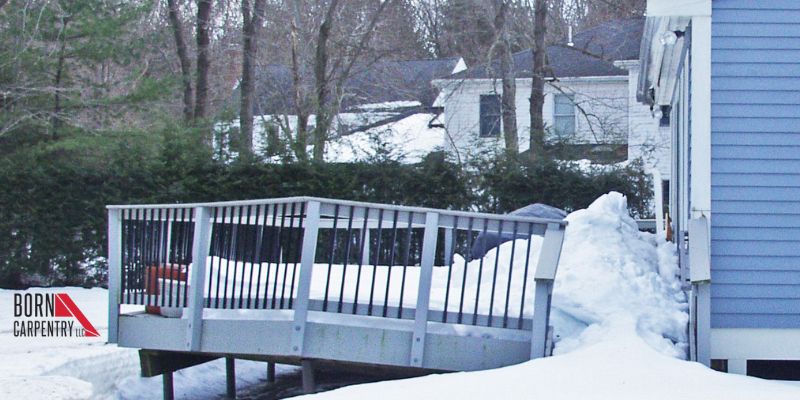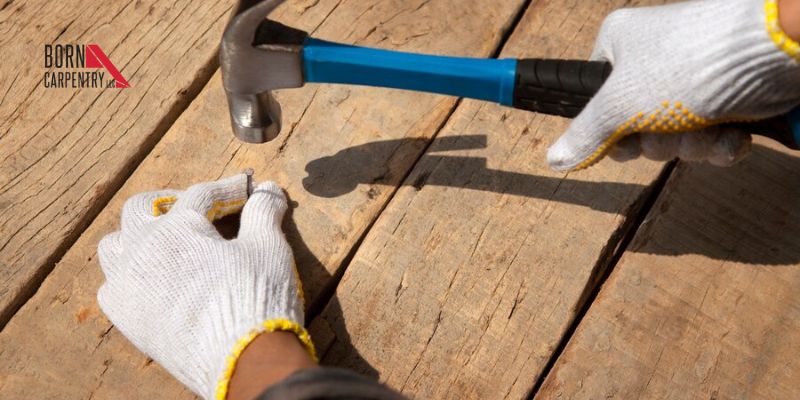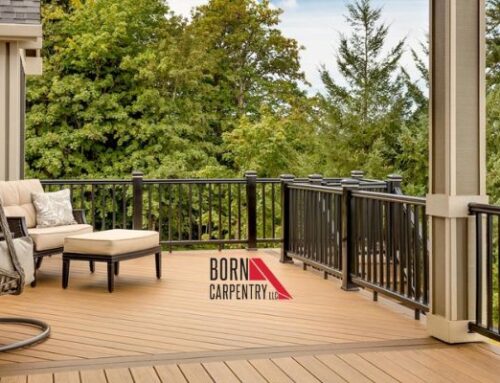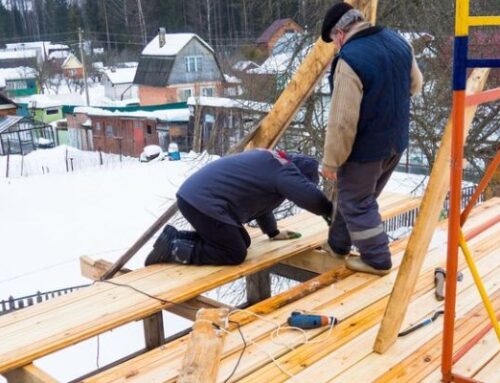It is imperative to carry out winter maintenance to ensure the longevity of your deck. However, as winter draws closer, your deck is likely to be subjected to snow, ice, and freezing temperatures which are harmful. This makes maintenance more important as it will help prevent issues.
The Functionality of Your Deck
A deck can be considered a multipurpose open addition to your home, which allows you to extend your living room outdoors and increase the comfort and convenience of daily activities. First of all, it provides an outdoor place for socialization, dining, and relaxation, where you can enjoy fresh air.
The deck also serves as an adaptable entertainment site if you choose to host parties, have barbecues, or just read a book. Also, it functions as a surface for outdoor furniture, potted plants, and decor creating beauty in houses. Such areas may be functional during the season and include appropriate amenities such as warm-weather or winter outdoor space.
Furthermore, you can add more value to your property by maintaining your deck. Its strategic design and blend into the landscape create a smooth transition from inside to outside, making your living at home even better. This is a valuable extension that must be regularly maintained because it is supposed to live long and continue performing.
The Importance of Winter Maintenance for Your Deck
The importance of winter maintenance for your deck cannot be overemphasized; it is a way to preserve its integrity and longevity. Several key reasons highlight the importance of taking proactive measures during the winter months to preserve its integrity and aesthetics:
1. Moisture protection
The winter with its heavy snow, ice, and freezing temperatures during which moisture seeps into wooden elements poses an onslaught to your deck. The infiltration may lead to swelling, twisting, and eventually, rotting.
Sealing or waterproofing is the most effective way of ensuring that moisture does not get to the building materials used. Rather than allowing water to soak into the wood and cause potential deterioration, this deck maintenance preserves the integrity of your deck while withstanding winter conditions.
2. Preventing ice damage

The ice accumulation poses a risk that your deck may fracture or break apart due to wood splitting and cracking because of the process of freezing and thawing. Snow and ice must be removed as quickly as possible, and you should avoid using harsh ice-melting products that may cause damage to the surface of the deck.
Taking quick action in winter snow precipitation removal assures deck integrity, preventing structural damage. A properly maintained deck through protective measures against ice also extends its life as well as maintains how good it looks. Gently but effectively melting ice is the best for the wooden deck because it allows for enjoying a warm season.
3. Avoiding mold and mildew
Mold grows during winter when the combination of moisture and sunlight is low. Consequently, this reduces the look of your deck and might be harmful to your health.
Examples of preventive measures include frequent cleaning and the use of anti-fungal products such as mold retardants to inhibit the growth of mold and mildew. This approach will protect the appealing look of your deck and also promote outdoor health safety.
4. Protecting against freezing and thawing
The expansion and contractions caused by winter’s freeze-thaw cycles could lead to cracks or splits in your deck. However, you could mitigate this by providing suitable maintenance solutions like repairing the existing damage and coating to protect the walls.
With these measures, the detrimental impacts of temperature changes on the strength and durability of wooden constructions are minimized. Constant maintenance in the winter season prolongs the life of the deck against the damage that winter offers.
5. Enhancing safety

Piled-up snow and ice on your deck are unsafe as they may make the surface slippery. You should regularly maintain your outer space including immediate snow removal and coating it with non-slip materials during winter to ensure your safety outside.
These measures are vital because if you do not put them in place, your deck will not be safe enough to be used during the winter. Preventing accidents using preventive maintenance under icy conditions makes the deck safe and comfortable for use in winter.
6. Extending lifespan
Prompt corrective action and preventive measures contribute tremendously towards considerably extending the lifespan of your deck. Winter maintenance maintains structural integrity, keeps the surface undamaged, and sustains overall aesthetic appearance. Prompt addressing of issues avoids possible escalation, while preventive actions protect people against a harsh winter.
Moreover, the method prevents the possible problems associated with swell and warp as well as the harm caused by freeze and thaw cycles. Winter maintenance is an important investment towards ensuring that your deck lasts long, remains functional, and is aesthetically appealing.
7. Preserving aesthetic appeal
In winter, it is not only about keeping the structure of your deck but also preserving its beauty. Winter elements tend to cause stains, discoloration, and damage that in turn reduce the visual appeal of a building. To keep the deck looking as good as new, it calls for constant cleaning, sealing, and prompt repair whenever required.
However, these proactive measures are not only aimed at mitigating the hardships brought about by winter but also at creating a welcoming outdoor setting. Winter maintenance focuses on the functions as well as the appearance of the wood deck to improve its appearance and durability during the cold months, thus increasing the pleasure of using the outdoor environment.
Conclusion
It is important to focus on winter maintenance of your deck if you want to keep it in good shape with its natural beauty intact as possible. Regular care protects from harsh elements, providing a quality lasting outdoor living area that boosts your home’s quality and value.






